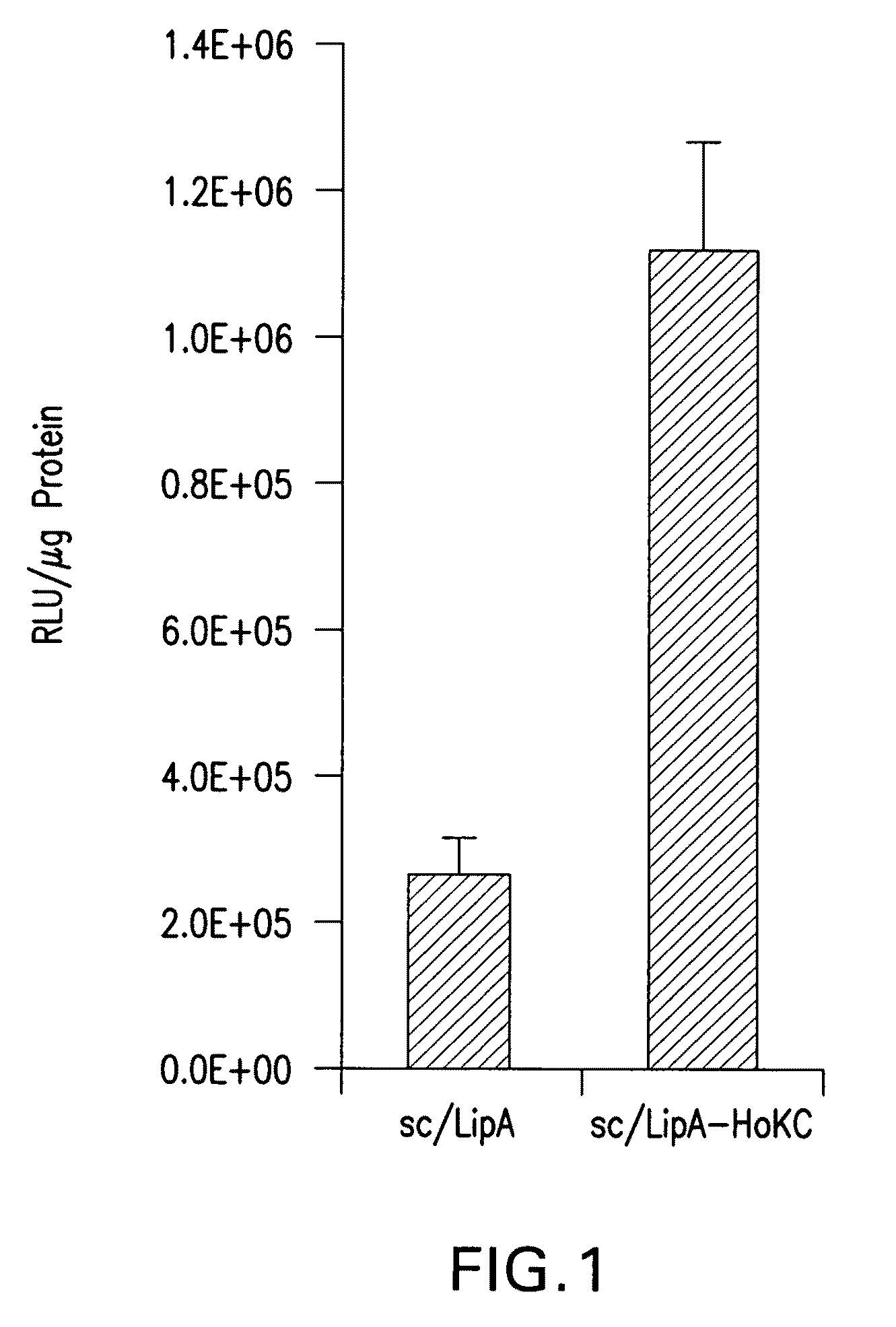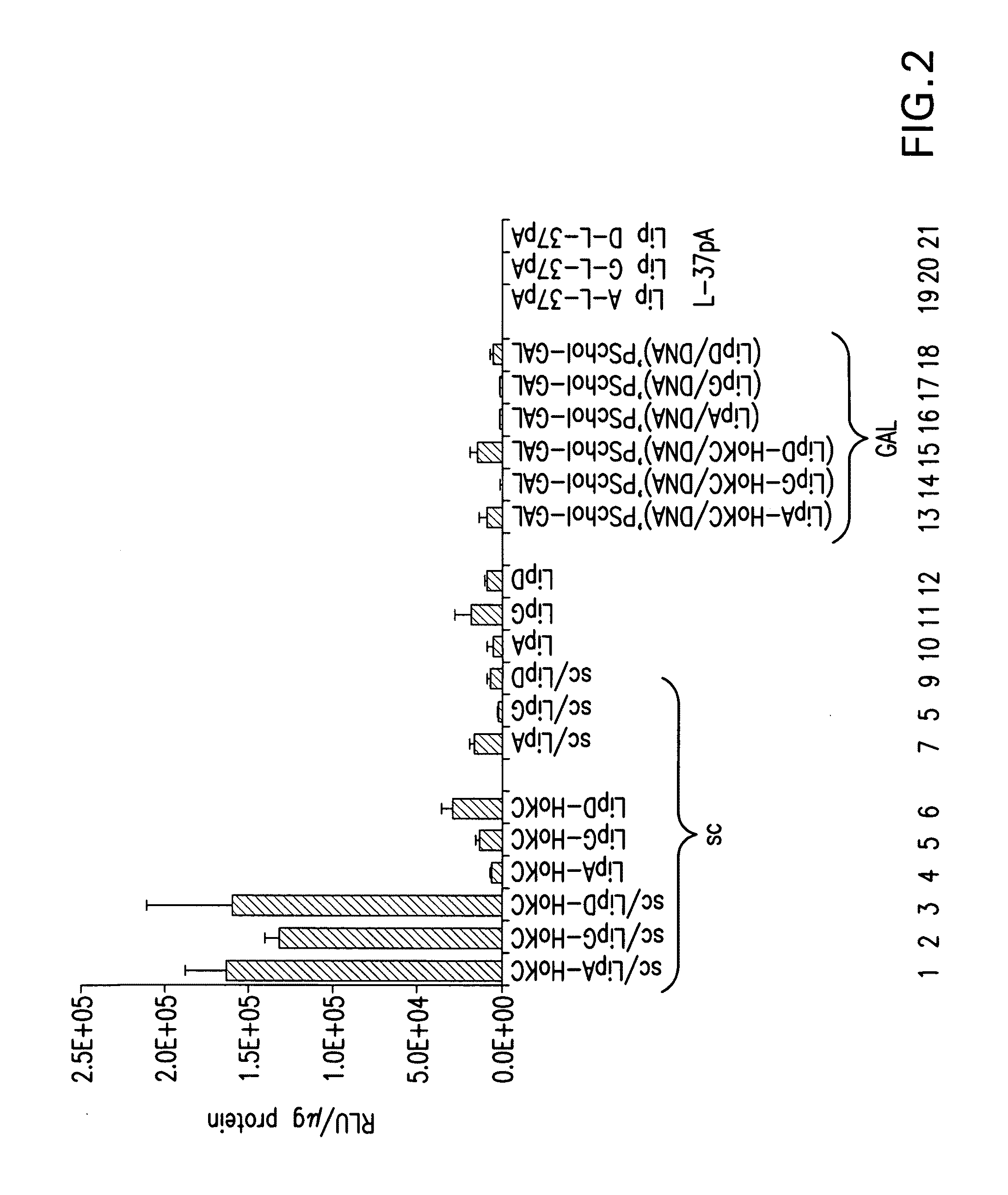Methods for generating immune response using cationic-liposome-mediated nucleic acid delivery
a technology of cationic liposomes and nucleic acids, applied in the field of drug delivery, can solve the problems of time and cost-intensive process, smallpox vaccines, live-attenuated viruses, and association with serious adverse events in immunocompromised populations
- Summary
- Abstract
- Description
- Claims
- Application Information
AI Technical Summary
Benefits of technology
Problems solved by technology
Method used
Image
Examples
example 1
Preparation and Use of Cationic Liposome-Based Hepatitis C Virus (HCV) Vaccination and Treatment Systems
[0096]In contrast to the previous dogma that protection from HCV re-infection is not induced by natural infection in chimpanzees (Farci P., et al., Science 258: 140 (1992); Prince A. M., et al., J. Infect. Dis., 165: 438-443 (1992)), it is now apparent that although re-infection does occur, there are memory immune responses in recovered humans and chimpanzees that lead to immediate control of viral replication and rapid clearance upon re-infection. After spontaneous recovery from HCV, resting HCV-specific memory T cells can be detected in the peripheral blood for decades, in many cases in the absence of detectable HCV-antibodies (Takaki A., et al., Nat. Med., 6:578-582 (2000)). HCV-specific cellular immune responses also persist in the liver, as demonstrated in recovered chimpanzees, and mediate protective immunity on re-infection (see, e.g., Bassett S. E., et al., Hepatology, 33:...
example 2
Intranasal (IN) Administration of Immunoliposomes
[0175]Vaccine administration via an IN route is especially useful for certain types of viruses, such as those that have a tropism for tissue of the head and neck (this includes the nose and throat). Examples include viruses that induce respiratory illnesses which includes not only influenza but also SARS and avian flu. However, this route could also be used for delivery of other types of vaccines as well. To compare the ability of the scL complex to target and transfect local tissue when given IN, non-tumor bearing BALB / c mice were given either the scL nanoimmunoliposome complex encapsulating a plasmid DNA that expresses the Luciferase gene (scLLUC), or an equal amount of the free, uncomplexed (naked) plasmid DNA (LUC) (10 ug / mouse / dose for both treatments), or no treatment (CTL). The scLLUC complex, prepared as in Example 1, by simple mixing at ratios of 0.33 ug:10 ug:1 ug (TfRscFv:Lip:DNA), with 5% Dextrose as an excipient. Two dose...
example 3
Optimization of Delivery of scL-HCV or scLHK-HCV to Hepatocytes In Vivo Using a Mouse Model
[0177]The scL or scLHK formulated with lipid A is used in the mouse studies. Twenty to thirty micrograms of DNA are delivered via liposome complexes to replicate mice in liposome complexes via the tail vein using 2-3 inoculations over a 24 hour period. To track the endocytosis of the liposomes into specific cell types, phospholipids labeled with rhodamine-DOPE are used at 0.05 molar percent of the total lipid (Avanti Polar Lipids, AL). Tissue samples are analyzed by western blot, histological staining and high-resolution imaging of cells are made by flow cytometry 24-48 hours post injection for expression of HCV specific proteins. For histological analyses tissue is either snap frozen in Tissue-Tek medium or formalin fixed. Tissue is sectioned using a cryostat or microtome and stained for specific proteins or cell markers. For paraffin-embedded formalin fixed tissue, sections are deparaffinize...
PUM
| Property | Measurement | Unit |
|---|---|---|
| Time | aaaaa | aaaaa |
| Time | aaaaa | aaaaa |
| Time | aaaaa | aaaaa |
Abstract
Description
Claims
Application Information
 Login to View More
Login to View More - R&D
- Intellectual Property
- Life Sciences
- Materials
- Tech Scout
- Unparalleled Data Quality
- Higher Quality Content
- 60% Fewer Hallucinations
Browse by: Latest US Patents, China's latest patents, Technical Efficacy Thesaurus, Application Domain, Technology Topic, Popular Technical Reports.
© 2025 PatSnap. All rights reserved.Legal|Privacy policy|Modern Slavery Act Transparency Statement|Sitemap|About US| Contact US: help@patsnap.com



